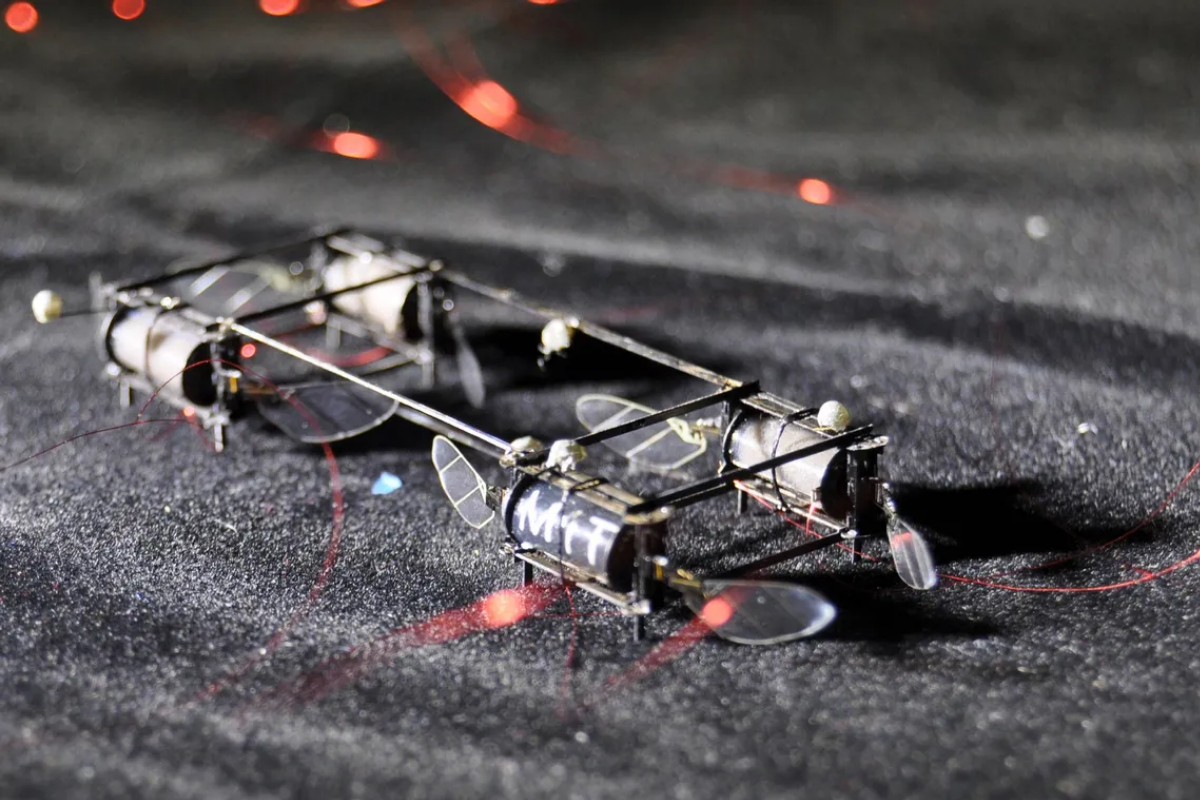- Little robot lightning bugs from MIT take to the air
- Electroluminescent artificial muscles inside the robots add 2.5% to their weight without affecting their flying.
- The robots weigh less than a paper clip and are inspired by lightning bugs.
Scientists have been inspired by fireflies to develop insect-sized flying robots that can emit light to facilitate motion tracking and communication.
Lightning bugs light up dark backyards on warm summer nights to attract a mate, scare off predators, or lure prey.
Researchers at MIT also got ideas from the way these fireflies shine. Taking a cue from nature, they made soft, electroluminescent muscles for flying robots that are the size of insects. During flight, the tiny artificial muscles that move the wings of the robots give off colored light.
With this electroluminescence, the robots might be able to talk to each other. For example, if a robot is sent on a search-and-rescue mission into a building that has collapsed, it could use lights to call for help if it finds people.
With the ability to give off light, these tiny robots, which weigh less than a paper clip, are one step closer to being able to fly on their own outside of the lab. Because these robots are so light, they can’t carry sensors, so researchers have to use big infrared cameras that don’t work well outside to follow them. Now, they’ve shown that just three smartphone cameras and the light the robots give off can be used to track them with great accuracy.
Large robots can communicate through Bluetooth, wifi, etc. Small, power-constrained robots require innovative communication methods. This is a huge step toward flying robots outdoors without a state-of-the-art motion monitoring technology, says D. Reid Jr. Assistant Professor in EECS, leader of Soft and Micro Robotics Lab in RLE, and senior author.
His team embedded electroluminescent particles inside artificial muscles. This adds 2.5% to the robot’s weight without affecting its flying.
IEEE Robotics and Automation Letters published the research. Suhan Kim, Yi-Hsuan Hsiao, Yu Fan Chen SM ’14, PhD ’17, and Jie Mao, an associate professor at Ningxia University, co-wrote the study with Chen.
[embedpost slug=”harmonizing-human-robot-relations-for-a-strange-job-world/”]





















